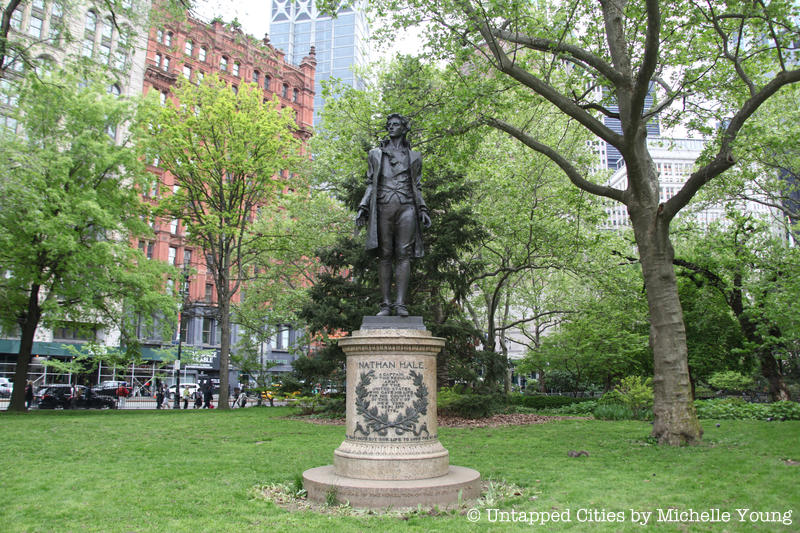6. Nathan Hale Monument

During the Revolutionary War, American forces were defeated at the Battle of Long Island when George Washington and his army fled to Manhattan at night under cover of fog. The British army took control of Long Island and remained there for the next few years. This included strongholds in Huntington, as well as other parts of Suffolk County, including Setauket. But during this occupation, Patriot Nathan Hale, who was a spy for the Continental Army, started to gather intelligence on British forces in Huntington Bay. Hale planned to disguise himself as a Dutch teacher looking for work, but he also carried his real Yale diploma with him. Hale was later captured by the British and executed, perhaps found near Huntington.
The Nathan Hale Monument honors his contributions to the war effort. Soon after a statue of Nathan Hale was unveiled in Manhattan’s City Hall Park on Evacuation Day, 1893, residents of Huntington tried to erect their own monument. Stanford White created a design and pledged $400 for the project. The memorial was unveiled on July 4, 1894. Both a statue on Main Street and a rock nearby honor the Revolutionary War hero. Additionally, during the American Revolution, Huntington adopted a “Declaration of Rights” stating that “every freeman’s property is absolutely his own.”





